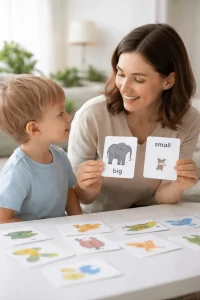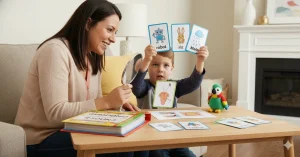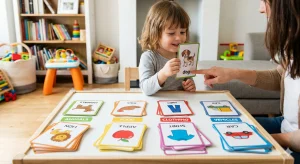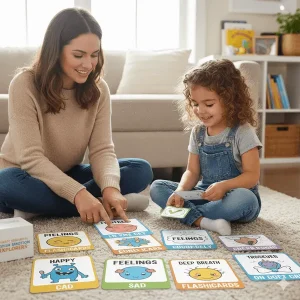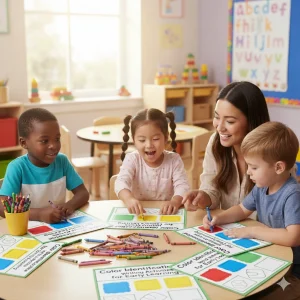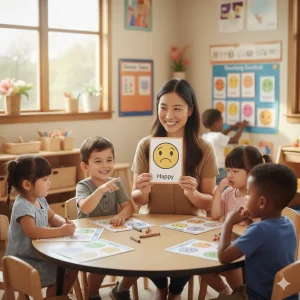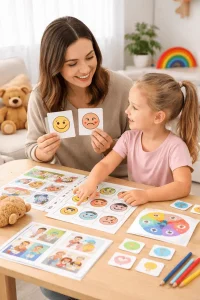Communication Exercises for Couples to Try at Home
By Wellness Hub
Last Updated: September 4, 2024
Communication Exercises for Couples is the cornerstone of any strong relationship. It’s not just about talking, but about connecting, understanding, and resolving conflicts constructively. When couples communicate effectively, they build a foundation of trust, deepen their emotional connections, and are better equipped to handle the challenges that relationships inevitably face.
Practicing communication exercises at home can significantly enhance these benefits. By making these exercises a regular part of your relationship routine, you create a safe space for open dialogue. This proactive approach prevents misunderstandings and resentments from building up, ensuring that both partners feel heard and valued. More importantly, these practices equip couples with the tools to navigate more complex issues, fostering a resilient bond that can withstand the tests of time.
Understanding Communication Barriers
Communication barriers can often turn a loving conversation into a frustrating deadlock. Understanding these common issues is the first step towards transforming how you interact with your partner.
Common Communication Issues Couples Face:
- Assuming rather than asking: Many couples fall into the trap of assuming they know what their partner thinks or feels, which can lead to misunderstandings and hurt feelings.
- Not truly listening: It’s easy to listen just to respond, rather than to understand. This can prevent genuine communication and make your partner feel undervalued.
- Avoiding difficult conversations: Sometimes, out of fear of conflict, couples might avoid discussing important matters, which only leads to bigger problems down the line.
- Over-criticism: Constant criticism can erode love and respect, turning discussions into blame games that nobody wins.
The Impact of Poor Communication on a Relationship:
Poor communication can profoundly impact a relationship, leading to a cascade of negative outcomes:
- Emotional distance: When partners don’t communicate effectively, they often feel disconnected or emotionally distant, as though they’re living parallel lives.
- Resentment: Small grievances can accumulate over time, leading to resentment if not communicated and addressed early.
- Conflict escalation: Minor disagreements can quickly escalate into major conflicts without clear and calm communication.
- Lack of problem-solving: Effective communication is key to solving problems together. Without it, couples may struggle to navigate life’s challenges as a team.
Basic Communication Exercises
Improving communication in a relationship doesn’t require complex solutions. Sometimes, basic exercises like active listening and using “I” statements can create a significant positive shift. Let’s explore how these fundamental techniques can transform the way you connect with your partner.
1. Active Listening: Techniques and Benefits
Active listening involves fully concentrating, understanding, responding, and then remembering what is being said. Here are some techniques to practice:
- Give your full attention: Avoid distractions like phones or televisions. Show your partner you value their words.
- Use nonverbal cues: Nodding your head, maintaining eye contact, and leaning forward are all signs that you are engaged.
- Reflect back what you hear: Paraphrase or summarize your partner’s words to show that you understand. For example, “So, what you’re saying is…”
Benefits of Active Listening:
- Enhances emotional connection: By actively listening, you make your partner feel cared for and valued.
- Reduces misunderstandings: Clarifying and confirming what you hear prevents miscommunications.
- Builds trust: Consistently showing that you are listening and understanding strengthens trust between you and your partner.
“I” Statements: Expressing Feelings Without Blaming
Using “I” statements helps you express your feelings without accusing or blaming your partner, which can often lead to defensiveness. Here’s how to use them:
- Express your feelings with clarity: Start sentences with “I feel…” For example, “I feel upset when we don’t spend time together.”
- Describe the situation without blaming: Follow your feelings with a non-blaming, objective description of what happened.
- Clarify your needs: End by stating what you need moving forward. For example, “I would love to have a date night each week.”
Benefits of “I” Statements:
- Promotes openness: Allows both partners to discuss their feelings openly and honestly without fear of conflict.
- Encourages responsibility: Helps each partner take responsibility for their feelings and behaviors.
- Fosters mutual respect: When conversations are free from blame, they are more likely to lead to understanding and respect.
Intermediate Communication Activities
As couples advance in their communication journey, incorporating more sophisticated techniques can deepen understanding and enhance emotional connections. The mirroring technique and emotionally focused exercises are powerful tools that facilitate greater empathy and intimacy.
1. Mirroring Technique: Ensuring Messages are Understood
Mirroring is a simple yet effective method to ensure both partners truly understand each other’s messages. It involves repeating back what your partner has just said, but in your own words. This technique can be particularly useful during more serious discussions or when resolving conflicts.
How to Practice the Mirroring Technique:
- Listen carefully: Pay close attention to your partner’s words.
- Repeat back: After they finish, summarize what they said in your own words. For instance, “What I’m hearing is that you feel…”
- Confirm accuracy: Ask your partner if your summary is accurate and adjust accordingly.
Benefits of Mirroring:
- Prevents misunderstandings: This technique ensures that both partners are on the same page.
- Increases empathy: By reflecting your partner’s words, you demonstrate that you are truly engaged and care about their perspective.
- Encourages deeper conversations: Mirroring can help partners feel safer and more understood, which encourages more open and honest communication.
2. Emotionally Focused Exercises: Connecting on an Emotional Level
Emotionally focused exercises help couples connect at a deeper emotional level, fostering a stronger bond and greater resilience in the relationship. These exercises encourage partners to express and respond to each other’s emotional needs.
Effective Emotionally Focused Exercises:
- Expressing core emotions: Share your deeper feelings about a situation, rather than just surface reactions. For example, instead of saying “I’m angry,” express the underlying feelings like fear or insecurity.
- Validating emotions: When your partner shares their emotions, validate their feelings by acknowledging and accepting them, even if you don’t fully understand them initially.
- Reassuring each other: Provide emotional reassurance that you are there for each other, regardless of the challenges you may face.
Benefits of Emotionally Focused Exercises:
- Strengthens emotional intimacy: These exercises help partners understand each other’s emotional landscapes, which is crucial for building a lasting connection.
- Reduces conflicts: Understanding and respecting each other’s emotions can lead to fewer misunderstandings and conflicts.
- Promotes healing: For couples dealing with past hurts or traumas, emotionally focused communication can be healing and transformative.
Advanced Communication Drills
For couples looking to further enhance their communication skills, advanced drills can provide deeper insights and strengthen their ability to handle challenges effectively. Two powerful techniques are conflict resolution role-play and appreciation exercises, each offering unique benefits to relationship dynamics.
1. Conflict Resolution Role-Play: Preparing for Real Disagreements
Conflict resolution role-play is a proactive approach to managing disagreements by practicing how to handle potential conflicts before they arise. This exercise helps partners develop a clear understanding of each other’s perspectives and rehearse constructive responses.
How to Practice Conflict Resolution Role-Play:
- Identify a potential conflict: Choose a common or hypothetical scenario that could lead to disagreement.
- Assign roles: Each partner plays both themselves and the other partner during different rounds to fully understand each perspective.
- Rehearse the conflict: Act out the scenario, focusing on using effective communication strategies discussed in previous sections.
- Discuss and reflect: After the role-play, discuss what you learned about each other’s feelings and how you can handle similar situations more effectively in the future.
Benefits of Conflict Resolution Role-Play:
- Enhances understanding: Seeing the conflict from both sides helps partners understand each other’s viewpoints and emotional triggers.
- Builds communication skills: Practicing calm and constructive responses prepares couples for real-life conflicts.
- Reduces actual conflict: By practicing in a controlled environment, couples can decrease the intensity and frequency of real-life arguments.
2. Appreciation Exercises: Fostering Positivity and Gratitude
Appreciation exercises are designed to increase positivity and gratitude within the relationship, which are vital for maintaining a strong, joyful connection.
Effective Appreciation Exercises:
- Daily appreciations: Make it a habit to express something you appreciate about your partner every day, whether it’s a small act of kindness or an aspect of their personality that you love.
- Gratitude journaling together: Keep a joint journal where you both write down things you are grateful for about each other and your relationship.
- Appreciation jar: Fill a jar with notes about why you appreciate your partner. Take turns reading them out loud once a week or whenever you need a boost.
Benefits of Appreciation Exercises:
- Strengthens bonds: Regularly acknowledging each other’s positive attributes reinforces your emotional connection.
- Creates positive feedback loop: A focus on positive aspects can lead to more positivity being expressed, enhancing overall relationship satisfaction.
- Reduces negativity: By concentrating on what is going well, couples can shift their perspective from what might be going wrong.
Creating a Communication Routine
Establishing a routine for communication exercises can significantly improve the quality and consistency of interactions between you and your partner. Here are some practical tips to seamlessly integrate these activities into your daily life and encourage ongoing growth in your relationship’s communication.
1. Tips for Integrating Communication Exercises into Daily Life
- Set a specific time each day: Just as you might schedule regular workouts or meals, set aside a specific time each day dedicated to communication exercises. This could be a brief period in the morning or a wind-down session at night.
- Incorporate exercises into daily activities: Use everyday activities as opportunities for communication exercises. For example, discuss your day using active listening during dinner, or practice appreciation when you see your partner doing household chores.
- Use reminders and alerts: Setting reminders on your phone or calendar can help you remember to engage in communication exercises. Over time, these reminders will build a habit that feels natural.
2. How to Encourage Ongoing Communication Growth
- Celebrate small victories: Recognize and celebrate when you successfully use communication techniques in real situations. This reinforcement can motivate both partners to continue practicing.
- Seek feedback from each other: Regularly ask each other for feedback on how the exercises are going and what improvements can be made. This not only promotes growth but also ensures that the exercises remain relevant and effective.
- Adjust and evolve your routines: As your relationship grows and changes, so should your communication practices. Be open to adjusting your routines to fit new circumstances or challenges in your relationship.
- Consistency is key: The benefits of communication exercises are most evident when they are done consistently. Make a commitment with your partner to stick to your communication schedule as closely as possible.
Daily Communication Routine for Couples
| Time of Day | Communication Exercise | Description and Benefits |
|---|---|---|
| Morning | Morning Affirmations | Description: Start the day by expressing appreciation for each other. This sets a positive tone for the day ahead. Benefits: Strengthens emotional connection and starts the day on a positive note. |
| Midday | Midday Check-ins | Description: Briefly connect to touch base on the day’s events or any upcoming plans. Benefits: Keeps both partners informed and involved in each other’s day-to-day lives, reducing feelings of separation or disconnection. |
| Evening | Evening Reflections | Description: Discuss the day’s events, focusing on what went well and areas for improvement. Benefits: Helps process the day together, supporting growth and mutual understanding. |
| Weekly | Weekly Discussion Session | Description: Dedicate a more extended session to discuss more significant topics or future plans. Benefits: Ensures ongoing alignment on important issues, fostering deeper understanding and proactive problem-solving. |
| As Needed | Spontaneous Expressions of Gratitude | Description: Share spontaneous moments of gratitude and affection throughout the day. Benefits: Reinforces love and appreciation, boosting overall relationship satisfaction and resilience against stress. |
Troubleshooting Common Issues
Even with the best intentions, couples may encounter challenges when implementing communication exercises. Here’s how to handle common issues such as resistance or lack of interest, and how to adjust exercises to better suit your relationship dynamics.
How to Handle Resistance or Lack of Interest
- Understand the reasons: Begin by understanding why your partner might be resistant or uninterested. Discuss their concerns openly and without judgment to find the root cause, which could range from feeling awkward about the exercises to not understanding their benefits.
- Make it relevant: Adjust the exercises to make them more relevant and engaging for both of you. If your partner loves technology, consider using apps designed to enhance communication. If they prefer direct conversation, tailor your approach accordingly.
- Start small: Introduce small, non-invasive exercises that don’t feel overwhelming. Gradual implementation can help ease into the routine without making it feel like a chore.
Adjusting Exercises to Fit Individual Relationship Dynamics
- Personalize your approach: Adapt the exercises to reflect your unique relationship dynamics. This might mean changing the timing, setting, or even the specific exercises to better align with your lifestyles and personalities.
- Seek professional advice: If adjustments on your own aren’t working, it might be helpful to seek advice from a relationship counselor who can offer professional insights tailored to your specific situation.
- Be patient and flexible: Every relationship evolves, and what works one month might need adjustment the next. Stay open to changing your approach as your relationship grows and changes.
Conclusion
We’ve covered various communication exercises in this article, each designed to improve understanding and connection between partners. Techniques range from basic ones like active listening and “I” statements to advanced strategies such as conflict resolution role-play and appreciation exercises. These methods help strengthen your bond and enhance the way you communicate.
Keep practicing these exercises regularly. Making them a part of your daily routine can transform how you interact, leading to a more harmonious and fulfilling relationship. Remember, the key to lasting improvement is consistency and commitment to each other’s growth in communication.
Frequently Asked Questions:
1. What are the most effective communication exercises for couples?
he most effective communication exercises include active listening, using “I” statements, conflict resolution role-play, and appreciation exercises. These techniques help couples understand each other better, resolve conflicts constructively, and deepen their emotional connection.
2. How often should couples practice communication exercises?
Couples should aim to practice communication exercises daily. Even short, five-minute exercises can significantly improve the quality of communication when done consistently.
3. Can communication exercises really improve a relationship?
Yes, regular practice of communication exercises can greatly improve a relationship. They help prevent misunderstandings, increase empathy, and strengthen emotional bonds between partners.
4. What should we do if we find it difficult to stick to communication exercises?
If you’re finding it hard to stick to communication exercises, try to integrate them into activities you already do together, like meals or evening walks. Also, consider starting with shorter sessions and gradually increasing the time as you both get more comfortable.
5. Are there any tools or apps that can help couples with communication exercises?
Yes, there are several apps designed to assist couples in improving their communication skills. These apps offer guided activities, reminders for daily exercises, and tips for effective communication.
6. What is the best way to start communication exercises if we have never tried them before?
Begin with simple exercises like daily appreciation moments where you tell each other one thing you valued about them that day. This can set a positive tone and make more complex exercises easier to approach.
7. How can we handle disagreements that arise during communication exercises?
When disagreements occur, use them as learning opportunities. Practice active listening and try to understand your partner’s perspective before responding. Remember, the goal is not to win an argument but to improve how you communicate.
8. Are communication exercises beneficial for long-distance relationships?
Absolutely, communication exercises can be incredibly beneficial for long-distance relationships. They help maintain emotional closeness and ensure clear understanding, which is crucial when you can’t solve things face-to-face.
9. Can these communication exercises be modified for families or groups?
Yes, many of these exercises can be adapted for family settings or groups. Activities like active listening and appreciation exercises are universally beneficial and can enhance understanding and respect among all participants.
10. What should we do if one partner is more committed to the communication exercises than the other?
Communicate openly about the importance of these exercises in strengthening your relationship. Encourage your partner by highlighting positive changes that come from these practices. Sometimes, seeing tangible benefits can motivate a less interested partner to engage more fully.
About the Author:
Prapoorna Mangalampalli
M.Sc., M.A., (Dual Masters in Psychology & English) – Counselor (6+ years of experience)
Prapoorna, with dual Master’s degrees in Psychology and English and over 6 years of experience, elevates human experiences through insightful counseling. She excels in online, marital, relationship, child, family, and career counseling. At Wellness Hub, she thrives in a team environment, valuing innovation, compassion, and client success.
Book your Free Consultation Today
Parent/Caregiver Info:
Client’s Details:
* Error Message
